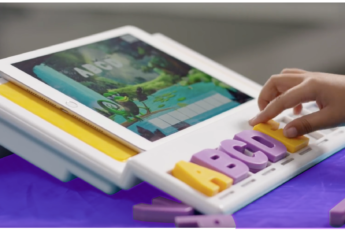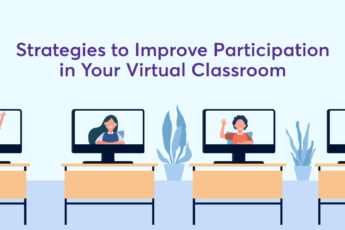Explore Square Panda Series: Know The Reading Readiness Skills
Learning comes naturally to kids, but when it comes to reading, the process slows down. Reading is an important element for early learners with a structured process which needs to be taught. It gradually seeps inside a young mind. Mostly, Educators have extensive concern for the achievement in initial reading experiences in kids. Today’s educators need the ingredients of effective educational programs to teach kids to read.
Yes, the teachers’ require to place reading instruction on solid footing. Reading is subsumed by early literacy. Here, a few substantial approaches have shed light on the reading acquisition processes and effective instructional approaches.
WHAT IS READING READINESS?
Reading readiness is the first step a child takes towards understanding early reading skills. It is the stage in development when, through the learning experience and maturation, they learn to read effectively.
According to the Ontario Government (2003), the acquisition of language is natural, but the process of learning to read is not—reading must be taught.
Did you know, that there are multiple methods and skills to determine when trying to build reading readiness capabilities in kids? Let us help you identify that the child is reading ready.

Learn Early Reading Readiness Skills
YOUNG MIND NEEDS TO LEARN THESE READING READINESS SKILLS:
Kids should be well-versed with these six critical skills before they attempt to master formal reading.
Improve Print Awareness Concepts: Kids know that the text represents spoken words. They become aware of the directions, left or right. Do kids know, how to hold a book or pen? Foster their fascination with book reading, developing a sense of rhythm and rhyme, analyse patterns. Their reading skills are emerging and they learn to predict word patterns.
Understand using Phonological Awareness: It is sensitivity to the sound structure of language. Phonological awareness has an ability to listen and identify special sounds (syllables, onsets and rimes, and phonemes) and letters in spoken words. Kids understand letters, vowels, constants, and two letters words to make new sounds. Phonological awareness increases their skills by playing with words; changing sounds or syllables. Little learners will eventually stump us with their literacy achievement.
Explore with Phonemic Awareness: Having phonemic awareness helps to create reading readiness skills in early learners. It is the first thread in the tapestry of reading. Here, the child’s ability evolves, as they listen and know how to manipulate the smallest mental units of sound—phonemes in the spoken language.
For example: When a child plays Lagoon Game, in its exploratory mode; they identify familiar sounds across a group of words, like color, cake, candy. Even can create a new word, recognise all individual phonemes in a single word, like a dog -> d,o,g.
How Does Phonics Instructions Improve Reading?
Reading fluency will foster confidence in the students. The main focus of phonics is to make children aware of the relationship between the letters of written language (graphemes) and the individual sounds of spoken language (phonemes). These instructions can be given systematically or incidentally. Children will learn to recognise words accurately and decode new words.
Discover the Alphabetic Principle (Letter Knowledge): It is an abstract concept where students receives clarity about the symbols i.e. letters and combinations of letters to represent the speech sounds in their elemental forms. The sounds are anchored to letters or strings of letters is known as the ‘Alphabetic Principle.’ In the reading development, children learn to use the alphabetic principle fluently. Using explicit phonics instruction—they understand the primary purpose of reading. The students’ grows and gains knowledge using the phonogram techniques further, they are shown, how to blend phonograms into words. After that, they’re trained to create blending practice using one-syllable consonant-vowel-consonant (CVC) words. Systematically, they learn how to read by recognition and naming of letter names and letter sounds.
For instance, Little learners can touch, feel and lay the ‘Smart Letters’ in the Square Panda Playset. It even engages kids in an ergonomically important ‘look-away’ time-span. Kid’s are placed in the optimally learning zone, to challenge their potential.
Motivation is the Key: There are various signs which reflects the kids are more interested in reading. If they frequently request for more read-aloud time and show enthusiasm for books or worksheets. Teachers and Parents can include various activities in kids daily routine to develop their interest in reading. Make reading an interactive and fun learning experience, which sparks their attention. Kids have short attention span- so read short story books with illustrative elements like bright colors, flags or different textures are good for keeping them engaged and motivated.
Display Listening Comprehension: Kid’s should be able to retell the story, answer the simple questions and ask more questions during the read-aloud.
For instance: In the mid-story section, a Child asked the Teacher; Why did the Panda laugh? It gives us an insight that child was paying attention and listening to the story.

Learn Reading Readiness Skills With Square Panda
After following the quick analyses, determine how the child is moving from learning to read and slowly towards the goal of reading to learn. Be sure your students are getting comfortable with these concepts before beginning the actual reading instructions. Reading readiness isn’t just about early literacy skills. It covers a set of four major competencies such as social, emotional, cognitive and physical development of the child. Build a culture at school and home, which evokes their interest in effective reading. Focus on making enjoyable reading activities rather than it being only academic centric.
QUICK TIPS TO RAISE STRONG READERS:
Prepare your students well, make them aware of the sounds of the phonograms, letter names, etc. They should be able to:
- Recite the alphabets, rhymes, etc.
- Recognise the alphabetic letters
- Re-tell a story
- Make them familiar with blends
- Place the letters
- Read there name
- Practice reading words aloud
- Use correct sounds when speaking the letters
- Understand the progression of text is placed left to right and top to bottom
Young minds are going through major development changes, in such a situation grasping reading skills quickly might seem impossible. Understanding reading readiness will enable you to teach more calmly and successfully turn your reluctant learners into avid readers for life. Most kid’s don’t develop the basic foundation of reading skills by themselves, Square Panda’s multisensory reading platform strikes a good balance here. With our tailor-made curriculum, now every child can learn to read well.

Phonics Instructions For Early Learners
Learn more about how to augment reading readiness into your child’s play. Square Panda can help you access using the multisensory techniques. Take a look at our library of games to engage early learners.
If we’ve hit your nerve and you require more insight about how to develop reading skills in your kids, leave us a comment below. Connect with us on our Facebook and LinkedIn to know more.
–Nidhi Parikh, SEO Content Writer, Square Panda India




Leave a Comment